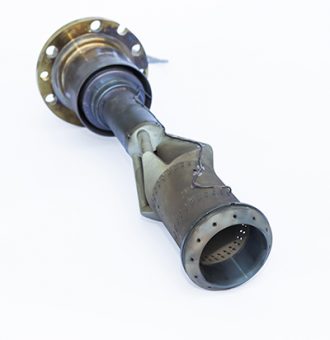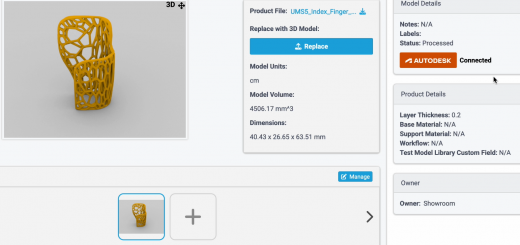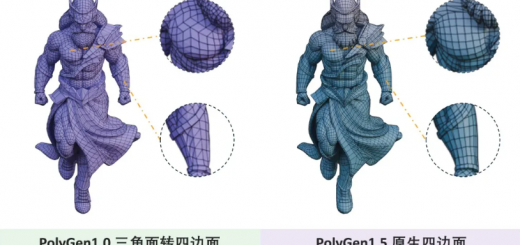Siemens Marks 8,000 Hours of Operation for 3D Printed Gas Turbine Burner
Though the benefits and promise of additive manufacturing are often touted, it is the concrete examples which are the most assuring. Today, Siemens announced that a 3D printed burner for an SGT-700 gas turbine has been in operation for a whole year, marking an exciting milestone for AM within the energy sector.
 Siemens’ 3D printed gas burner for the SGT-700 gas turbine.
Siemens’ 3D printed gas burner for the SGT-700 gas turbine.
The part has reportedly been in successful operation for over 8,000 hours at E.ON’s combined cycle power plant in Philippsthal, Germany. The international private energy company worked closely with Siemens in developing and bringing the 3D printed component for the gas turbine to life. Siemens, which has been exploring 3D printed gas turbine burners for some time, focused on the design and manufacturing of the innovative part, while E.ON is certifying the part’s viability (and leveraging its advantages) at this early stage.
Siemens has been producing gas turbine burners over the past year using selective laser melting technology through its intelligent burner manufacturing program (IBUMA), based out of Finspång, Sweden. The burner heads are 3D printed in a single piece, which offers advantages (both in terms of production time and quality) over traditionally manufactured burners which comprise of 13 separate pieces and 18 welds.
Siemens has also integrated certain improvements to the burner’s design, including the incorporation of the pilot-gas feed into the burner head rather than positioning it outside the fuel pipe. This update helps to maintain a lower operating temperature and consequently ensuring a longer operational lifespan for the 3D printed part and the gas turbine it is built into.
“As an energy service provider, precision and consistency are an absolute requirement for us,” expalined Niklas Lange, project manager at E.ON Energy Projects. “Additive manufacturing not only delivers this, but in our experience it can even improve performance compared with older models. We like to help drive innovation. When I saw these burners from Siemens in Sweden, I knew we could benefit from using them in a commercial turbine. It’s also important to note that our hands-on collaboration with Siemens has been a key to deliver performance to our customer.”
Within the energy sector, additive manufacturing is increasingly being used to develop and manufacture complex turbine components. Because of the technology’s unique ability to produce complex structures and internal geometries, it has the potential to create more efficient and low-emission turbines with higher temperature tolerances. This, specifically, is thanks to the integration of complex internal cooling ducts into gas turbine blades and vanes.
Last year, Siemens made headlines for 3D printing and validating the world’s first gas turbine blades through its 3D-Experts team. Later that year, at its Finspång facility, the company additively manufactured the gas turbine burners which are now in operation at E.ON. The results one year down the road are immensely promising and showcase the viability for 3D printing in the energy sector.
“These early results from the IBUMA burner with E.ON validate our belief that this technology is a game-changer,” said Vladimir Navrotsky, CTO for Siemens Power Generation Services, Distributed Generation. “We appreciate E.ON’s active participation and commitment to driving innovation and look forward to our continued close collaboration.”
Source: 3D Printing Media Network




Recent Comments